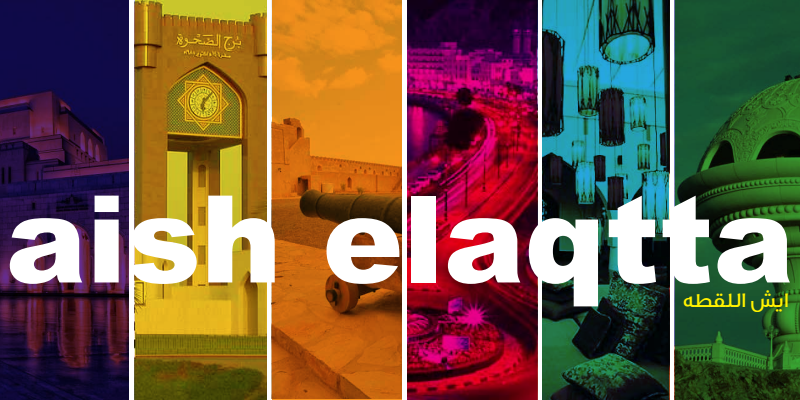 If you have recently moved to Oman (or are soon planning to) and are looking for one book to help you understand Oman and the progress she has seen since Sultan Qaboos took control in 1970, The Reformer on the Throne is the book for you. Written by Sergey Plekhanov (originally in Russian), it has been translated into Arabic and English. (The English version has additional photographs not included in the Arabic and Russian versions.) It’s available in almost any bookstore in Oman and if you want to pay a few extra rials, it’s also available at the airport! 🙂 For those living outside Oman, it’s available at these links at Amazon and Trident Press.
If you have recently moved to Oman (or are soon planning to) and are looking for one book to help you understand Oman and the progress she has seen since Sultan Qaboos took control in 1970, The Reformer on the Throne is the book for you. Written by Sergey Plekhanov (originally in Russian), it has been translated into Arabic and English. (The English version has additional photographs not included in the Arabic and Russian versions.) It’s available in almost any bookstore in Oman and if you want to pay a few extra rials, it’s also available at the airport! 🙂 For those living outside Oman, it’s available at these links at Amazon and Trident Press.
There are 16 chapters in the book (A Restless Autumn, Early Impressions, Oman’s Ancient Centrality, Oman and the Spread of Islam, Intrusion from the West, The Birth of a Dynasty, Holding the Balance, All the Riches of the Earth, Far from Home, The Autumn of the Monarch, A New Age Dawns, Struggle for Hearts, Family of Peoples, Renaissance, Facing the Future and The Conductor and his Orchestra).
Let me quote a few brief passages from “A Restless Autumn” and “Early Impressions” just to give you an idea of what an insightful writer (dare I say “historian”) Sergey Plekhanov is.
“On 18 November 1940, the Sultan’s beloved wife Miyzun bint Ahmed Alma’ashani gave birth to a son. The boy was called Qaboos, a rare name in the Arab world (footnote: The birth took place in Salalah while Said bin Taimur was in Muscat. It was to be a year before the father saw his son for the first time.), and the title of Sayyid (His Highness) indicated his unique destiny as a future ruler of his people.”
“One of the first questions to arouse the curiosity of the young Sayyid was why his country was named Oman. It was a question of more significance to Qaboos than to other children of his age, for to the heir the name of his country was not an abstract idea. In due course he would have to bear a title that would become an integral part of his own name – Qaboos bin Said, the Sultan of Oman. He learned that the origins of his country’s name were obscure. It was known only that some centuries before the Qur’an was revealed, Roman historians and geographers knew of the name Oman. Arab writers at the beginning of the Islamic era tried to explain it in different ways: some maintained it was the name of a tribe, others believed that it was the name of a valley in Yemen, once inhabited by the powerful Azd who at the time occupied the south-west of Arabia. Some held the opinion that it was named after someone who had built a tower there. This latter explanation was the most attractive: a small boy could well imagine a tanned, muscular leader giving orders to erect sentry walls in a barbarous, unsettled country and his fellow tribesmen repulsing the attacks of wild lions and beligerent foreigners.”
“Classical writers called the south-west region of Arabia that supplied frankincense to markets from China to Rome “Arabia Felix“, meaning “happy” or “favoured” Arabia. However, the onset of difficult times for this land was probably linked to the decline of the Roman Empire. As its gods were abandoned in favour of Christianity, the market for incense, such an essential feature of Roman pagan worship, disappeared.”
“Because of limited cultivable land Oman has never been densely populated.”
“It was true that a slave trade has existed, but despite the undoubted injustices and hardships connected with the slave trade in general, there were differences in the treatment meted out to slaves depending upon in which country they found themselves held captive. Europeans were shocked by the fact that Arabs kept slaves; they failed to draw any distinction between the terrible hardship of black Africans in the North American plantations and the treatment meted out to those kept by Arabs, taking no account of the patriarchal interdependence that existed in many Muslim communities where slaves often became like family members. Applying European notions to life in the East can be counter-productive, creating misunderstandings and enmities which still nourish arrogance in the West and fundamentalism in the East.”
“The young Qaboos was told much about this remarkable invention of the ancient Arabs (the falaj), which works as well now as it did then (there are estimated to be about 11,000 aflaj (Arabic plural of falaj) in Oman, of which 4000 flow constantly). A falaj, similar to the Persian qanat, is an underground channel dug from an aquifer on a hillside down to the valley. Even on the hottest of days, the water arrives at the settlements and the fields tasting fresh and sweet.”
“There where the mountains meet the sea, lies Muscat. The very name of the city, from the Arabic word muscat (to fall), reflects the nature of the site: here the mountains, as it were, tumble into the ocean.”
“Hence, from earliest times, fortresses were built all over Batinah (region) to protect against incursions. Moreover, the capitals of Oman were usually situated here: first Sohar, then Rustaq, then Sohar again, and finally Muscat.”
“He (Sultan Sayyid Qaboos) was naturally drawn to the ordinary people. Whilst encounters with those in the royal entourage – courtiers and servants – were predictable and therefore lacking much interest, his encounters with desert dwellers, fishermen and merchants were far more rewarding. He was avid to learn about his people and the country and quickly realised that these were the best teachers. His peers often commented on the close attention the young Qaboos paid – even at chance meetings with his countrymen during his all too infrequent trips outside the al-Husn palace.”
“The tribal structures which evolved on the Arabian Peninsula resulted in a system based upon debate and popular choice, marking the origins of a unique style of democracy whose principles are well established in the Arab psyche.”
“In ancient times chiefs and kings entered the battlefield ahead of the army, which is why history contains so many accounts of the loss of monarchs killed in battle. This necessity to prove one’s right to power through acts of personal courage and hardiness died out long ago in the West, but in Arabia the image of the warrior king remains a powerful concept even now.”
Those are just a few of my favorite parts of the book so far that I felt were very insightful. I bought the book at Borders in City Centre for 13.2 Omani rials. I look forward to reading the rest and learning more about this fascinating land and the man who has brought Oman to where it is today. “My meetings with the political figures of modern Oman, its intellectuals and its ordinary citizens, have provided me with a comprehensive picture of the country and its leader; it is clear from all that I have learned that the current transformation of this ancient land has largely been made possible through the efforts of its Sultan.” (Sergey Plekhanov, April 2004)
“My meetings with the political figures of modern Oman, its intellectuals and its ordinary citizens, have provided me with a comprehensive picture of the country and its leader; it is clear from all that I have learned that the current transformation of this ancient land has largely been made possible through the efforts of its Sultan.” (Sergey Plekhanov, April 2004)







